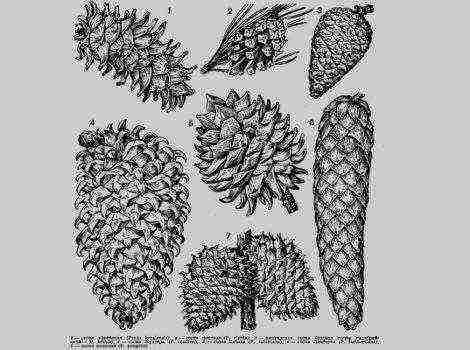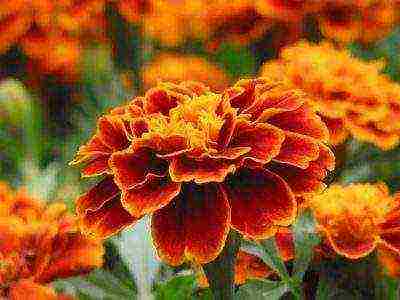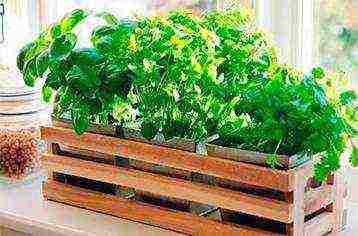Content
-

Buy or make a mini peat pellet greenhouse as a planting medium. The Jiffy firm produces mini-greenhouses for 72 tablets, and they cost no more than 200-300 rubles. There are many other options available at nurseries and horticultural stores.
-
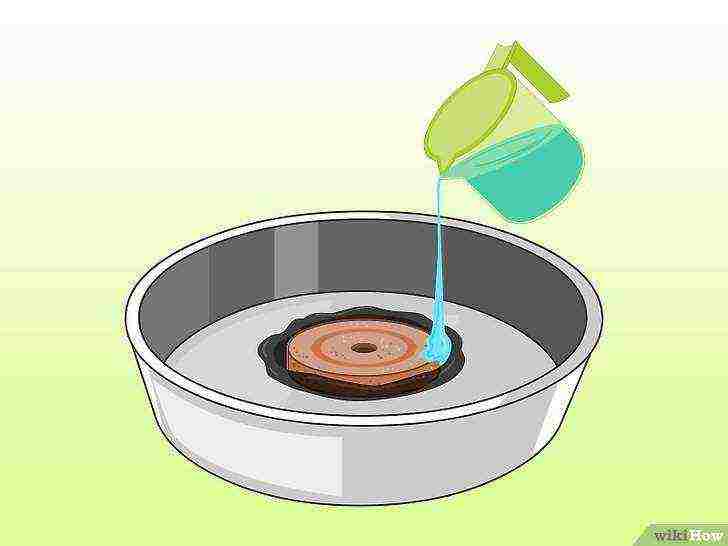
Place a layer of peat tablets on a flat baking sheet. Bring a pot of water to a boil and pour it slowly onto a baking sheet to swell the tablets. Boiling water will not only do this better, but it will also do some sterilization that will reduce the chances of failure. Repeat this step until you have prepared all the tablets that you need.
-
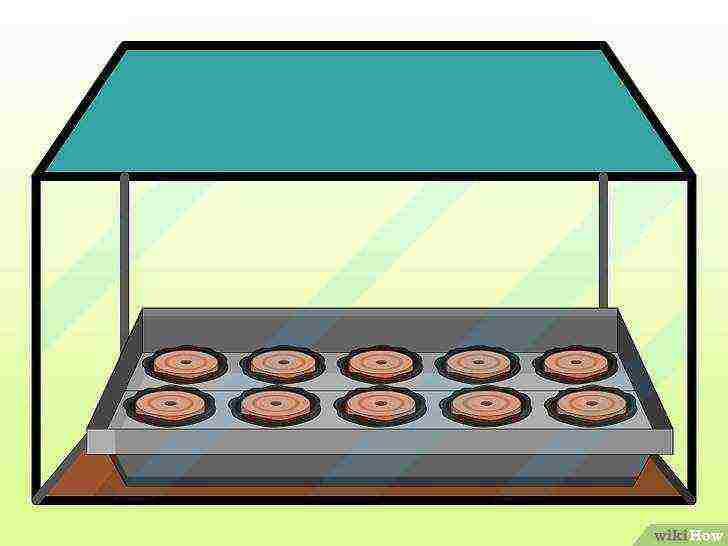
Return the tablets to the mini greenhouse. Depending on how wet they get, you may need to keep the greenhouse open for a couple of days until the tablets are slightly dry. You don't need dampness, and the pills hold moisture really well. Ideally, the tablets are wet but not wet.
-

Soak the seeds for a day in 30-degree water. Make sure the water is not too hot - temperatures over 40 degrees will kill the seeds. Water colder than normal will not harm the seeds, but will postpone the moment of germination for a couple of days.
-
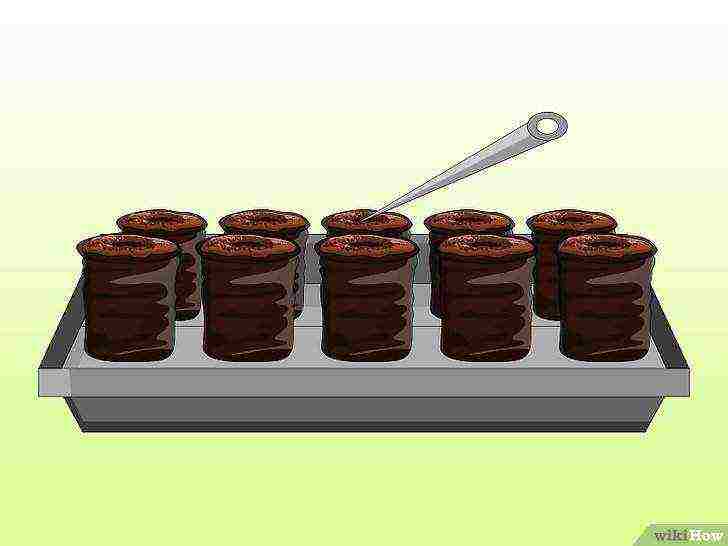
Open and shake the top of the peat tablets with chopsticks or wooden skewers.
-
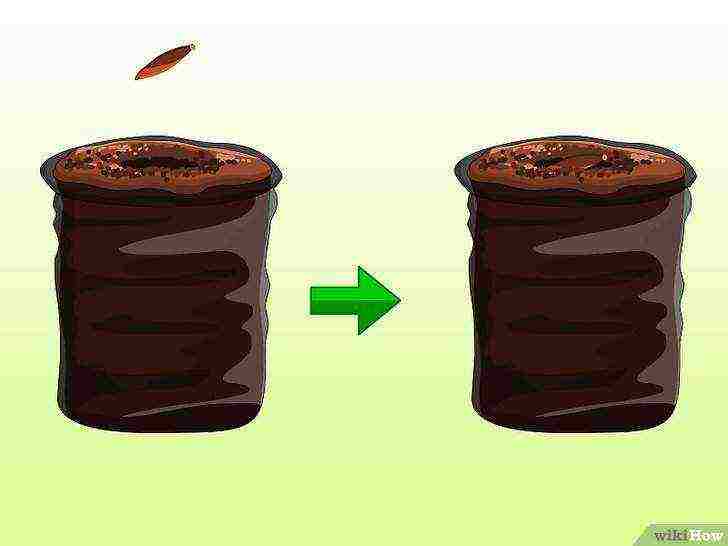
Place only one seed in each tablet. Since bamboo seeds are a rare and expensive thing, you should not risk and put several seeds in one tablet - no matter how many sprouts there are, you can only leave one, the rest will have to be thrown away.
-
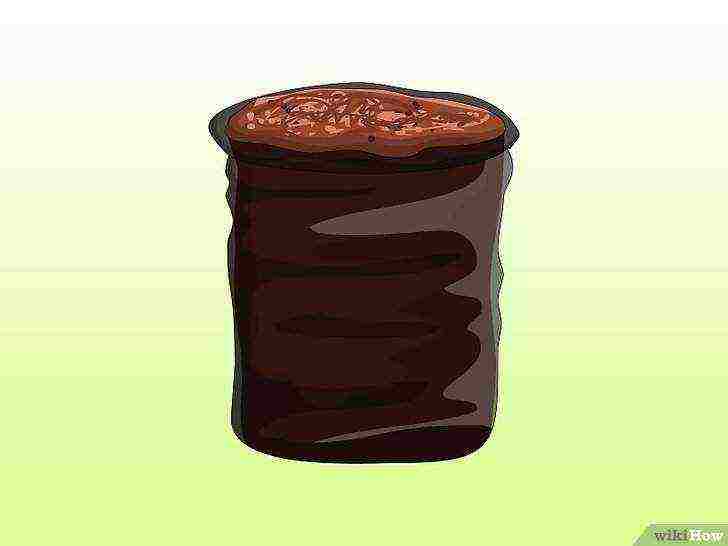
Add some seedling potting mix on top of your seeds. 1/8 to 2-5 mm will suffice.
-

Place your mini greenhouse in a location with moderate shade. If the weather is cold, the east window will do; if the weather is good enough to keep the greenhouse outdoors, place it in moderate shade. REMEMBER: wherever you put it, it should not be in direct sunlight. Even in a mini greenhouse, direct sunlight will quickly raise the temperature to killer temperatures, killing your seeds.
-
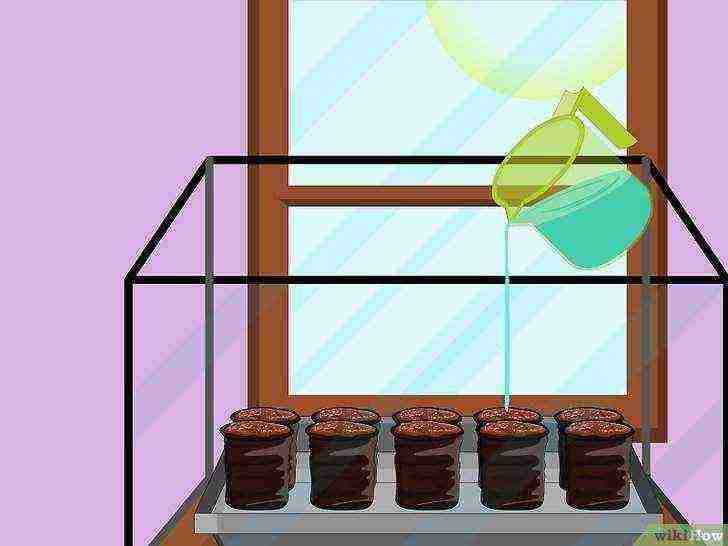
Check your greenhouse daily because peat pellets can dry out quickly once the moisture from the initial soak evaporates. Prior to germination, seeds may experience one or two episodes of severe drying out. But as soon as the shoots appear, they can die in just a couple of hours of drought. If the tablets start to dry out, use a spray bottle and re-moisten the substrate. You may need about the size of a syringe to moisturize the entire inside of the tablet.
-

You can find sprouts within 10 days of planting, although the main germination will occur after at least 15-20 days. Different species have different germination times, so don't get discouraged too early.
-
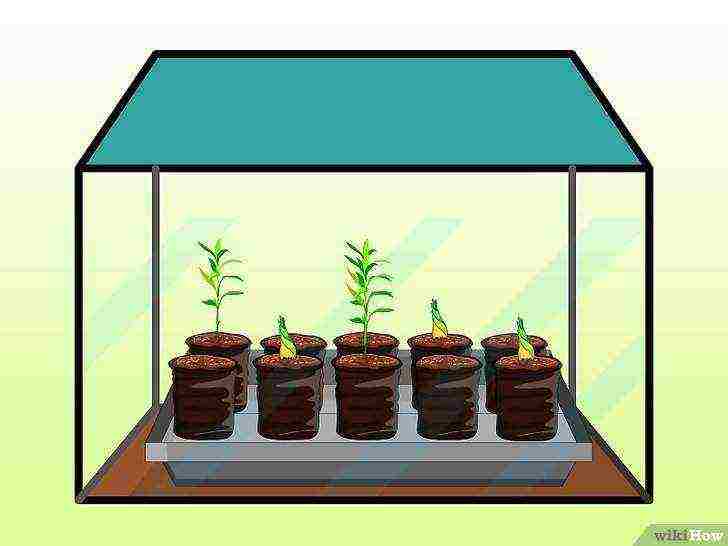
If any sprout grows too tall and starts touching the plastic lid while others are just starting to break through, lift the lid so the leaves don't touch the plastic. Leaves resting on the lid will quickly begin to rot, which can ruin the seedlings.
-
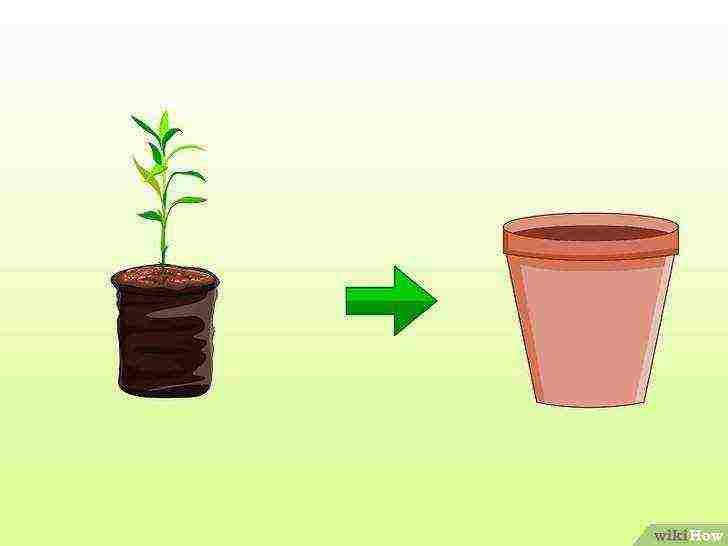
After a month, most of the seeds that can germinate through this method will sprout. Transplant all healthy shoots into 1/2 quart pots following the rest of the guide. However, do not throw out the rest of the seeds ahead of time - we will try to do some tricks with them to awaken them to life.
-
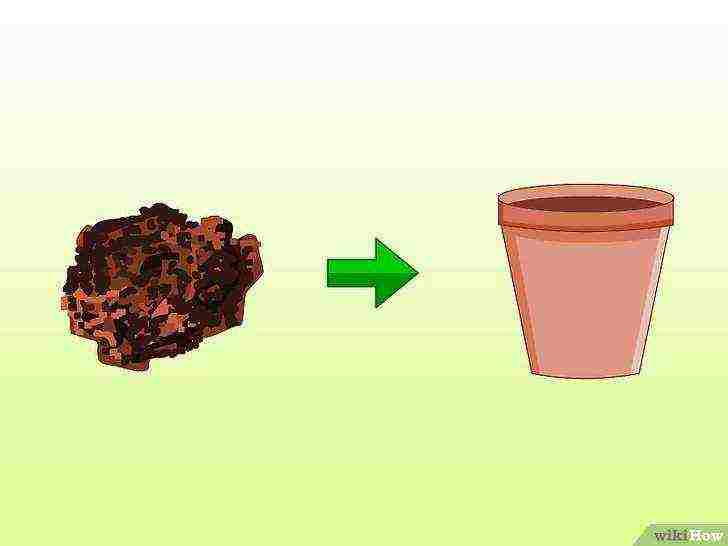
Mix equal proportions of quality potting soil and bark mulch. This will give you a mixture with very good water drainage, which is good for bamboo.
-
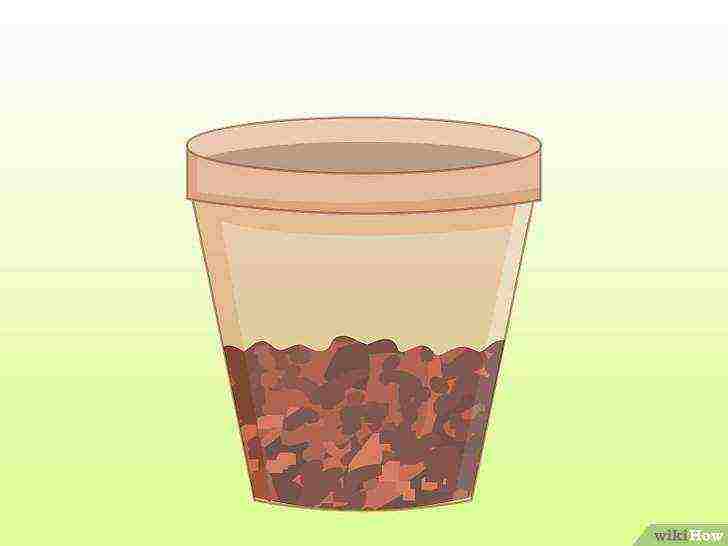
Pour some of this mixture into pots (1-1.25 cm).
-
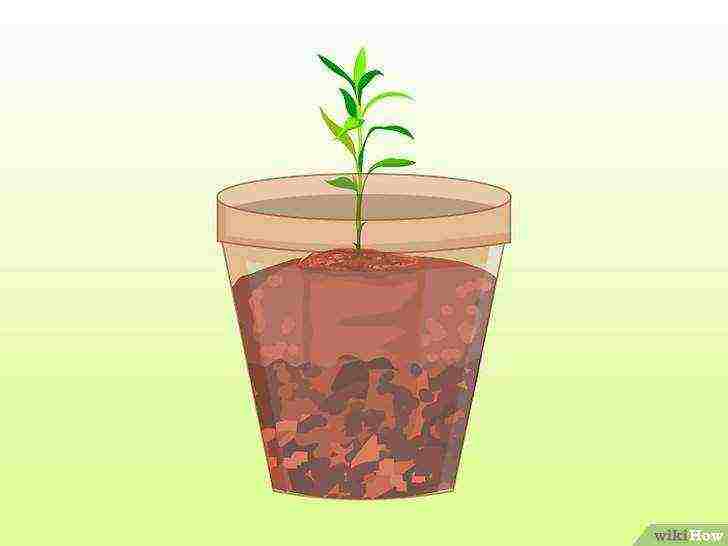
Move each sprout pill to the pot and fill the space around it with potting soil so that the pill is at least half a centimeter below the soil level.
-
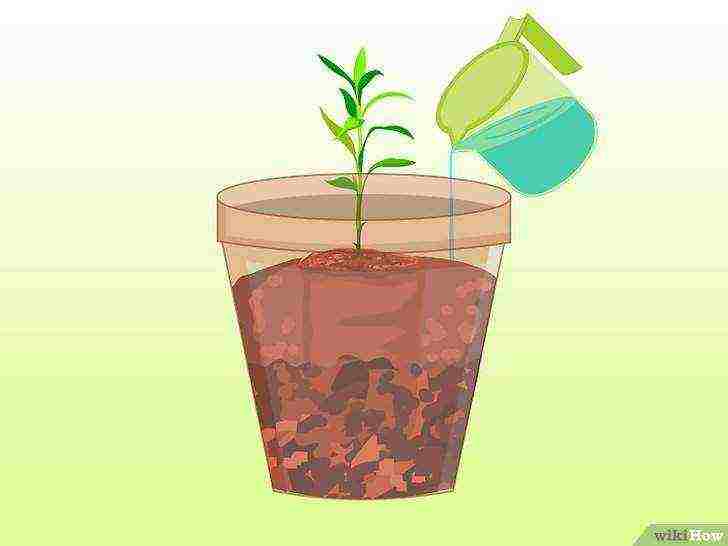
Water the pots liberally. Since you have a very good flow of water in your pot, don't be afraid to overflow a little.
-
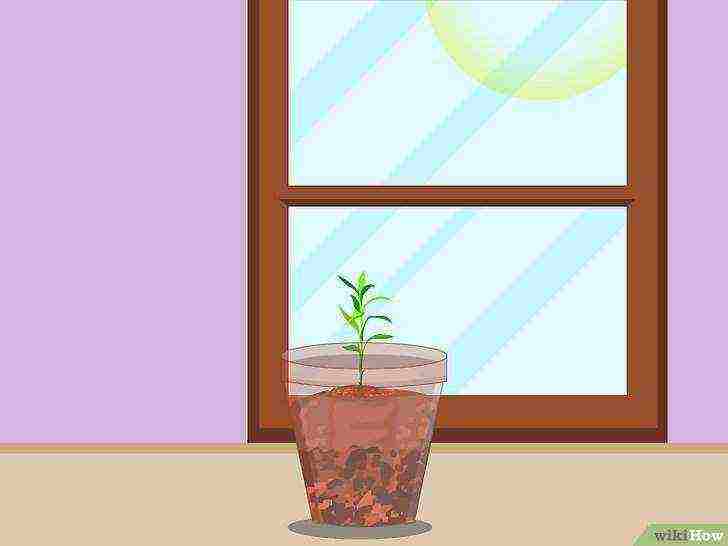
Place the pots outdoors in partial shade, where they will never be exposed to direct sunlight for more than a couple of minutes at a time. Now your sprouts can be left to themselves. Most likely, for some unknown reason, 10% of the seedlings will die, but the remaining shoots will have a good chance of growing into adult plants.
-
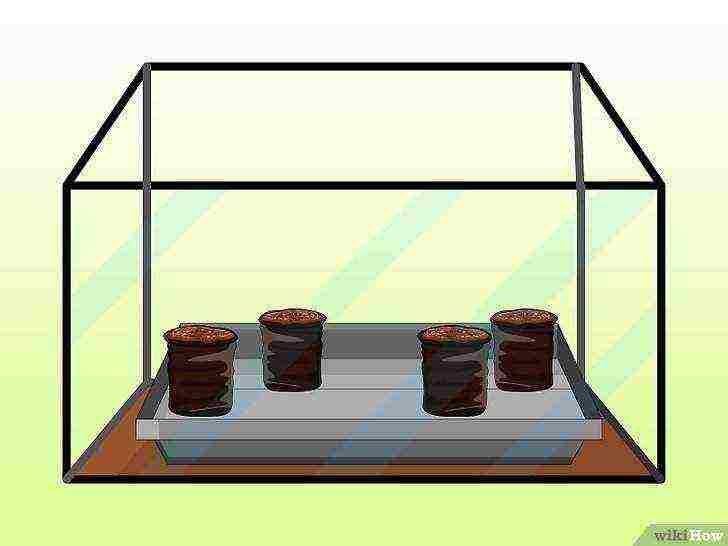
Return to the non-germinated seed tray and remove the lid. Save it for next use if you like, but it won't be useful with this seedling.
-
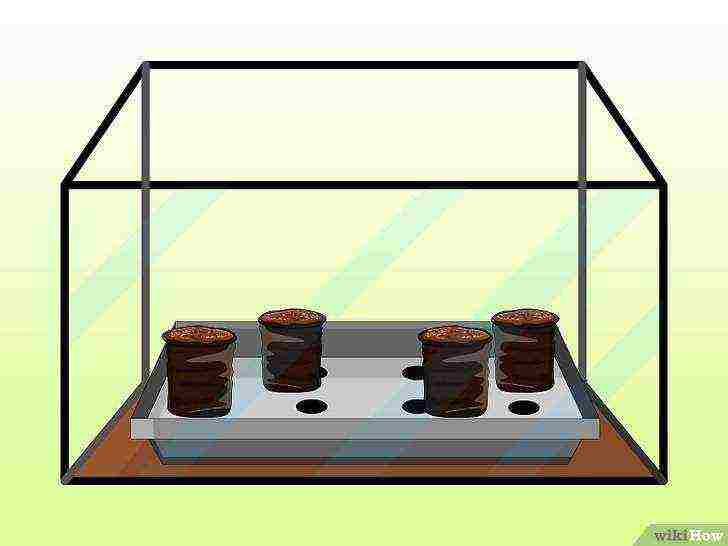
If your mini greenhouse has a plastic insert for peat pellets, remove it and make a few holes in the bottom of the tray.
-

Return all tablets back to the tray with the plastic insert removed. Place them evenly over the entire surface, as before, with the seeds facing up.
-
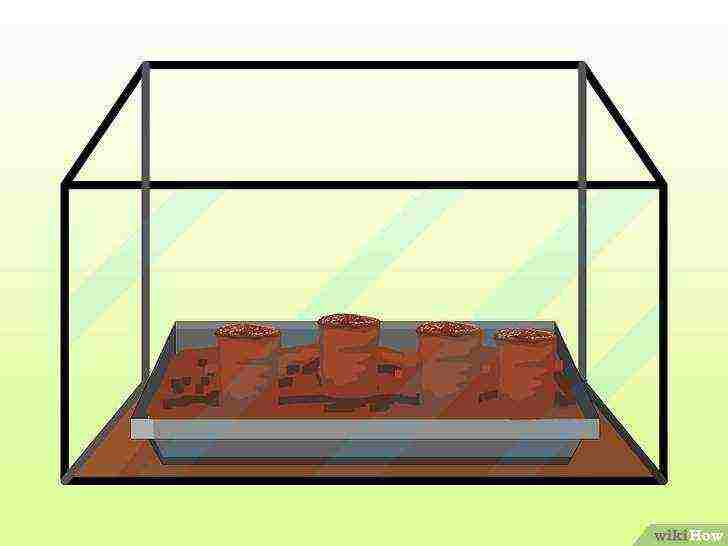
Fill the space around the tablets with seedling soil; Sprinkle the tablets themselves on top of the same mixture by 5-7 mm.
-
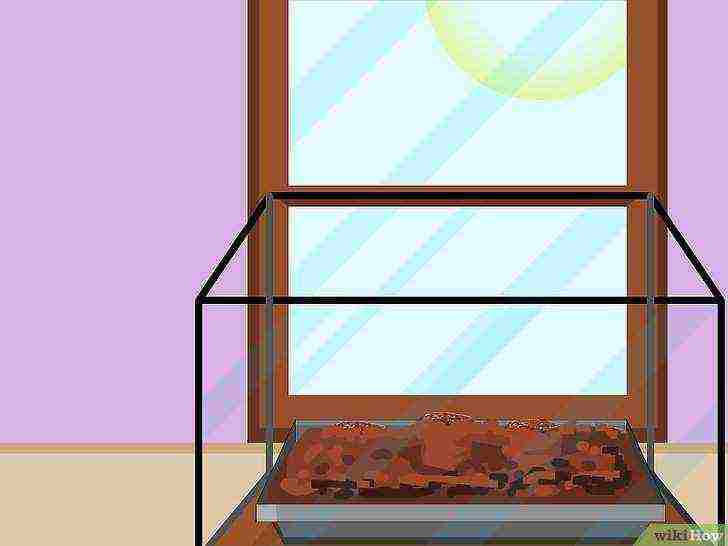
Place the litter box outside in a sunny place, checking every day to see if the soil is moist enough - it should be damp but not wet. Since you removed the lid and increased the amount of sun you receive, you will have to water the sprouts almost every day. At this stage, it will be easier for you to use a regular watering can, because now the watering may even be over the norm.
-
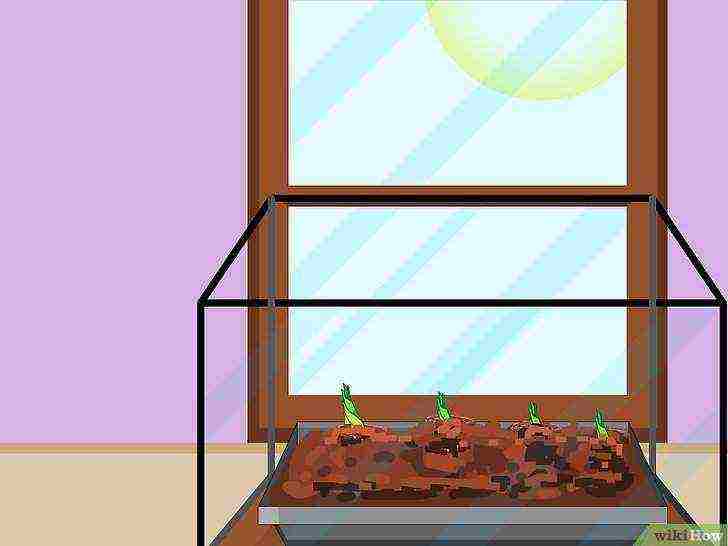
Hopefully, you will receive an additional batch of sprouts in the next few weeks. Once they are ready, go with them to step 12 and transplant.
What do you need to know?
Most lovers of indoor flowers have a mistaken opinion about the special capriciousness of this exotic plant. However, to keep it indoors, you just need to take into account some of the features of bamboo and it will grow great and feel at home.
Photo
You can visually familiarize yourself with indoor bamboos and the conditions of care and maintenance in the photo below:
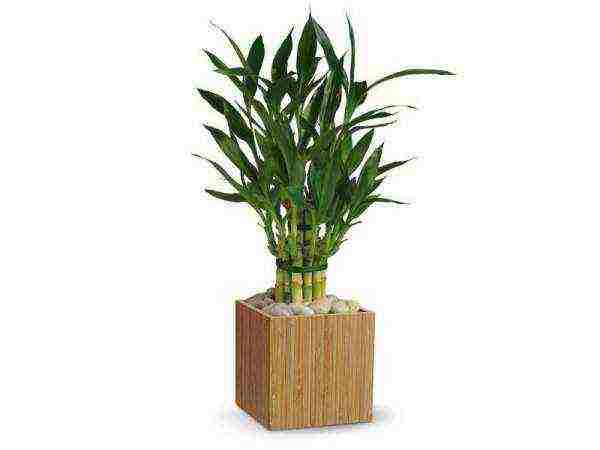
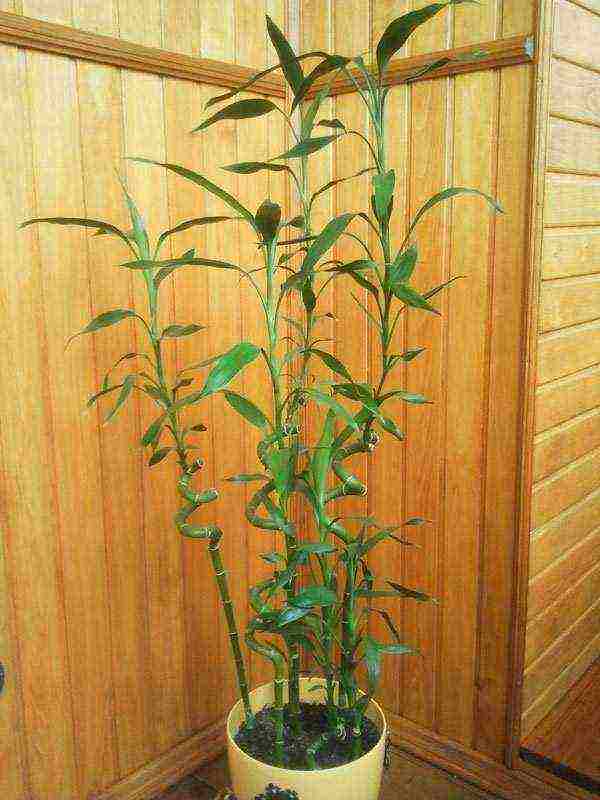
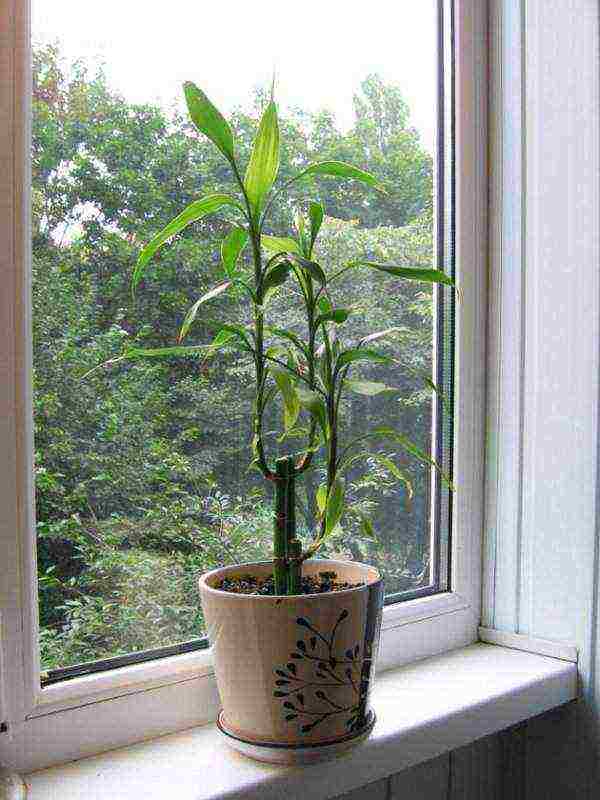
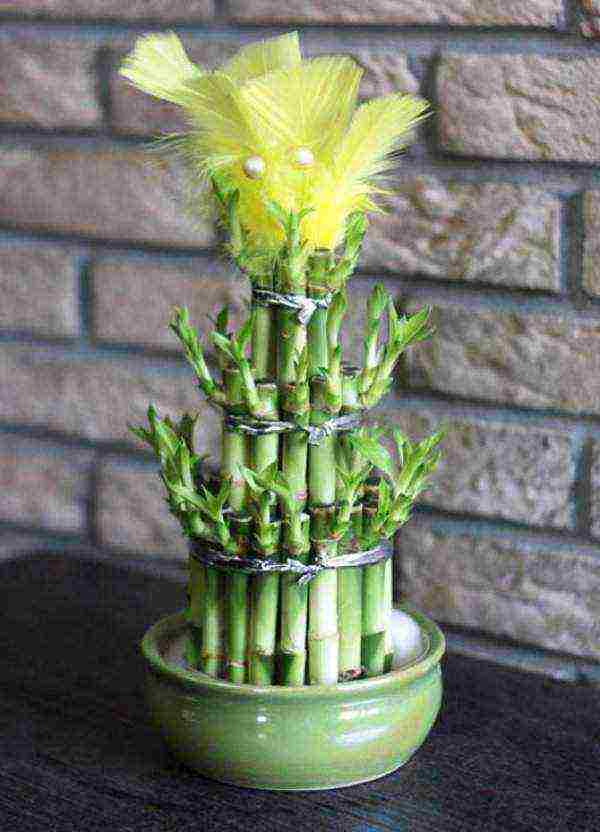

How to grow at home?
There are two ways to keep and grow bamboo at home:
In water... The liquid for the maintenance must be absolutely free of any impurities, therefore it needs to be specially cleaned... You can use spring water or rainwater - in such water it will feel great. It is possible to prepare water by freezing in a refrigerator.
In the water every time you need add a few drops of mineral fertilizers or a mixture for aquarium plants. Without this, the bamboo will die. To prevent decay processes, a little charcoal is added to the water.
For cultivation, take a long vase. Place the stem there and fix it with pebbles. The water is changed once a week, bacteria will develop in the old and the plant will die.
In the ground... The pot fills up universal potting mix and bamboo is planted in it. The main condition for growing is a sufficient amount of moisture, therefore the plant need to water often.
IMPORTANT! But the water in the pot should not be allowed to stagnate, the leaves will sag from this, and the bamboo will lose its decorative effect.
Growing rules
There are two ways:
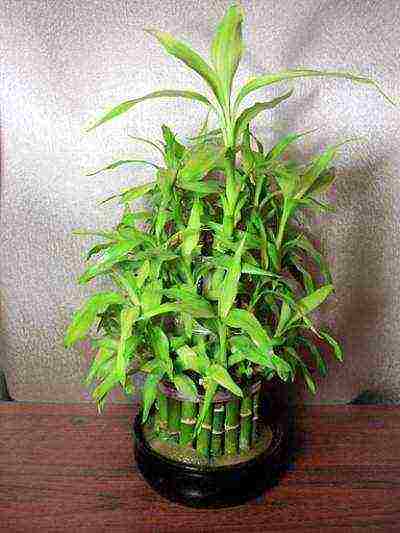 How to grow bamboo from a scion? The sprout brought into the house should get used to the conditions of the apartment. Then it is placed in spacious pot... The size of the pot is of particular importance. Since he needs a lot of space to form a root system.
How to grow bamboo from a scion? The sprout brought into the house should get used to the conditions of the apartment. Then it is placed in spacious pot... The size of the pot is of particular importance. Since he needs a lot of space to form a root system.
How to grow from seed? Before planting, the seed must soak for 8-12 hours... During this time, the embryo should wake up inside the seed.For sowing, a substrate is taken from the surface soil (8 hours), ash (1 hour), wood chips (1 hour). The mixture must be sieved. to remove debris and stones from it.
The seeds are placed to a depth of 3-4 mm one by one. From above, the holes are sprinkled and not rammed, since the seeds need air access. The container is placed in a shaded place. Crops are watered daily... The sprouts will appear in 20-25 days.
A feature is the initial formation of the root, only then does it sprout.
After 4 months, when the sprouts begin to sprout, they are planted in pots of peat. Bamboo is planted in a permanent place when its height reaches 40-50 cm.
Care and reproduction
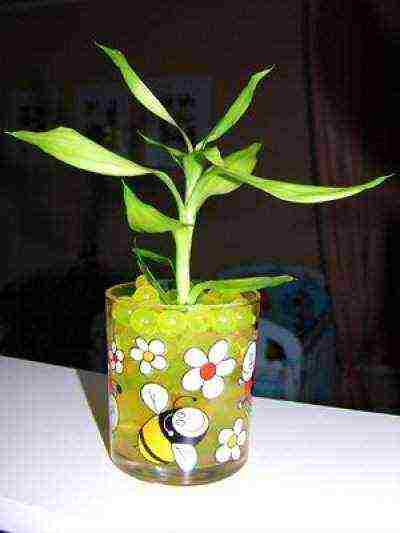 The breeding time of indoor bamboo, like many flowers, is spring. There are several ways to propagate bamboo at home:
The breeding time of indoor bamboo, like many flowers, is spring. There are several ways to propagate bamboo at home:
Division of the stem... The maternal stem is cut into several pieces and waxed at the cut points. This is necessary to maintain the necessary moisture inside the pieces. The workpieces are placed in water. Roots are formed after 3-3.5 weeks... After that, it is planted in a pot or in a vase of water.
Cuttings... For this method, the tops of the stems are cut from the plant and placed in water. The disadvantage of this method is that only one shoot can be obtained from each stem... It is worth cutting off the top of the head with two knots. A cut on an adult plant must be processed. If this is not done, the plant will dry out.
Side shoots... Young shoots are taken from an adult specimen. They can be planted in water or directly into the ground. An important condition is frequent watering of the rooting shoot.
By dividing the root... In an adult plant, having dug it out of the soil, a part with a healthy sprout and roots extending from the node is separated. An important condition is the age of the sprout, it must be at least two years old... New shoots will appear from the buds in a year, they need to be cut off.
Possible problems
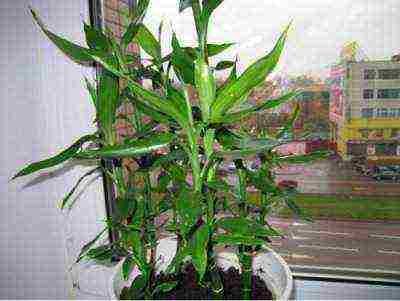 Some troubles when growing bamboo can arise if the balance of moisture in the soil and the lack of minerals in it are not observed.
Some troubles when growing bamboo can arise if the balance of moisture in the soil and the lack of minerals in it are not observed.
- Lack of water leads to the appearance of brown spots on the leaves.
- Soft, hanging leaves indicate waterlogging.
- Slow growth comes from lack of nutrition. If you forget to add fertilizer when growing in water, the plant will die altogether.
Only competent care and adherence to these rules will help you grow this exotic plant at home.
Useful video
We bring to your attention a video on how to grow bamboo at home:

Bamboo is a thermophilic plant that, according to the teachings of Feng Shui, brings happiness to the house. Amateur gardeners do not give up their attempts to grow this evergreen perennial in their backyard, because some varieties tolerate frosts quite firmly, and live up to 120 years! At home, you can try growing bamboo from seeds.
How to grow bamboo from seeds?
To do this, you need to build a mini-greenhouse with peat tablets as a planting medium, although you can prepare the substrate yourself from 8 parts of nutrient soil, 1 part of wood ash and one part of husk of cereals or sawdust. In the case of peat tablets, they need to be well moistened with freshly boiled water so that they swell. Those who are interested in how to plant blue bamboo with seeds should soak the latter for a day in water at a temperature of 30 ° C. Now you need to loosen the top of the tablets a little and place one seed in each.
Sprinkle them on top with seedling potting soil and fill a specially prepared tray with them. The pallet is placed in a glass container with a lid, and if there is none, then you can cover it with plastic wrap. The greenhouse environment must be ventilated up to three times a day, and the mini-greenhouse must be kept on a window with medium shade and in no case should it be placed in direct sunlight.When growing bamboo at home, do not forget to regularly moisturize the substrate. The first shoots may appear within 10 days from the moment of planting, but most often it takes 15–20 days. After a month, the sprouts can be transplanted into separate pots.
Reanimation of non-germinated seeds
Such conditions for growing bamboo are not able to ensure 100% germination, but do not rush to throw away empty tablets. They can be placed in soil consisting of good quality soil and bark mulch. The tablet should be below ground level by half a centimeter. The substrate should be watered with plenty of water and the pots should be placed in partial shade. You can leave the tablets in a glass container, filling the space between them with seedling soil and also lightly sprinkle with earth on top. After placing the container in a sunny place, the soil should be moistened daily. As soon as the bamboo grown at home gets stronger and reaches half a meter in height, it can be transplanted into the garden in the spring, when the soil warms up enough.
